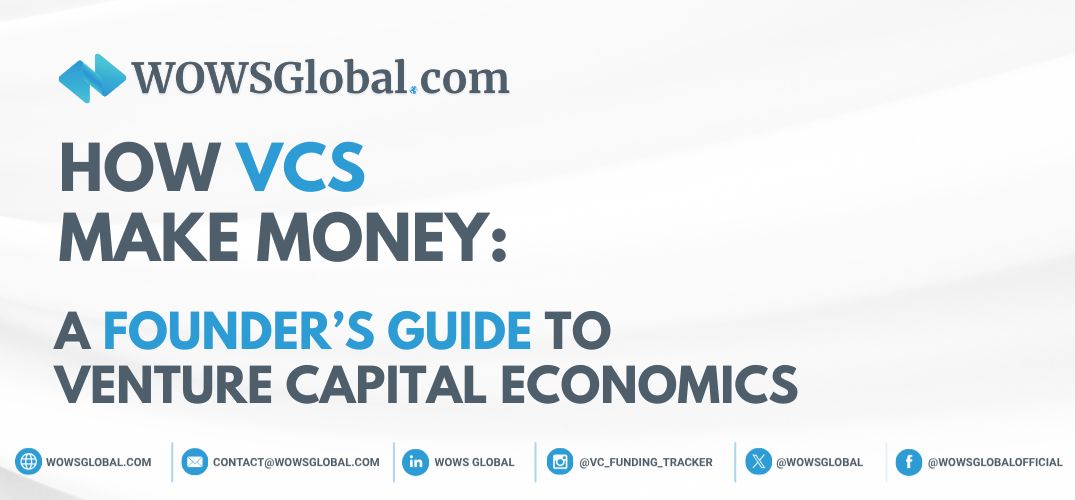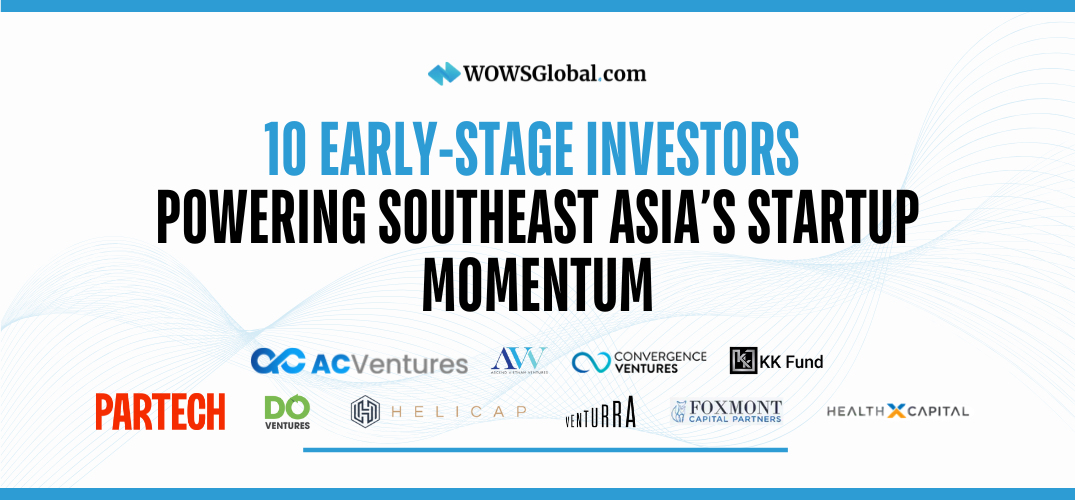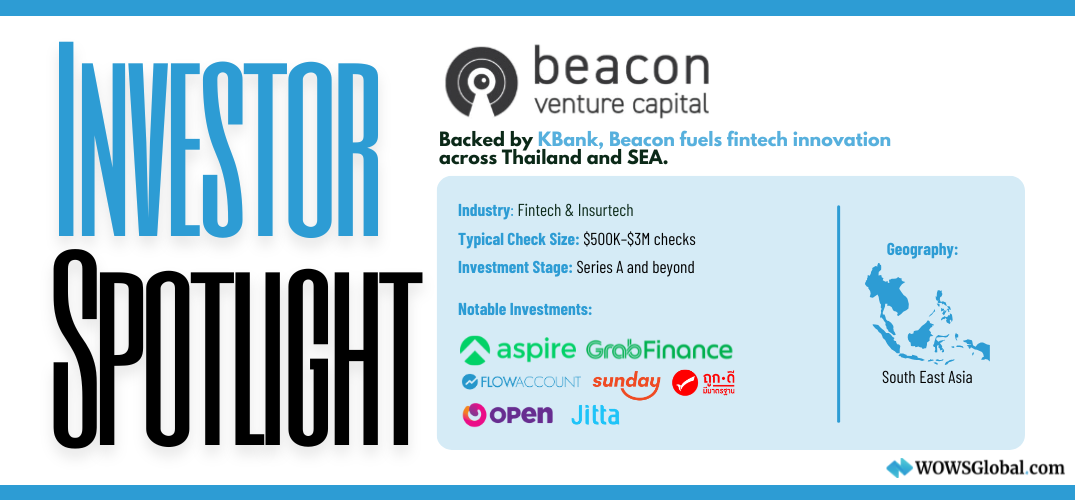The A-Z of Fundraising for founder (Part: 2 E-H)
Equity Management Finance Funding Funding Round Fundraising for Founders

Founders of startups have a lot to contend with as they formalize their ideas, turn them into reality, and then proceed to grow their business healthily.
As you progress, the world (and art!) of successful fundraising will become more and more important.
Similar to all business sectors, startup founders will encounter fundraising abbreviations, acronyms, terms that speak for themselves, and others that are far more obscure.
To help you grasp exactly what these terms mean, here’s a comprehensive A-Z of fundraising from WOWS Global. This handy reference guide will help every founder talk the fundraising talk with confidence.
Because we are digging deep to deliver everything related to fundraising this guide will be split into easy-to-read parts. This is part 2 covering the letters E to H:
Part 2 – E to H

E is for:
Early Stage: This is the earliest stage of the 3 main startup phases. It relates to fledgling, often pre-valuation companies.
EBITDA: An abbreviation of ‘Earnings Before Interest, Taxes, Depreciation, and Amortization’. This is a cash flow measurement calculated by taking revenue-less expenses without including interest, taxes, depreciation, and amortization.
Earnout Provisions: A contract clause detailing future compensation for a seller if the business reaches certain performance goals.
Elevator Pitch: If you are going to get anywhere in your fundraising quest your elevator pitch needs nailing. It is the short brief given to potential investors, industry specialists, and customers to convey your overall product or service concept in an exciting way.
The term elevator pitch derives from the thought that this initial pitch should be delivered at the same time as an elevator ride takes, around one minute!
Employee Stock Option Pool (ESOP): An ESOP is an employee benefit plan. It is where a company grants employees stock options. Startups can use ESOPs to attract and retain key talent by allowing these employees to purchase company shares at an agreed fixed price on the grant date.
The majority of institutional investors will request that founders create an ESOP pool before they invest. This is done to ensure that key hires can be recruited without causing investor equity dilution. To understand more about the importance of digitizing your ESOP, please click here.
Entrepreneur in Residence (EIR): A highly experienced entrepreneur employed by a VC (Venture Capital) firm in an advisory role.
Equity: This represents ownership. It indicates how much control an individual has over company decision-making. Founders will come across 2 forms of equity: common stock and preferred stock.
Equity Financing: This is a money-raising tactic. It is where investment is given in exchange for a percentage ownership of a company.
ESG: This abbreviation stands for Environmental, Social, and Governance. It is an established set of standards that any socially conscious investor uses to measure (and screen) what they feel are good investments.
ESG considerations include how a company thinks about the environmental impact of their business, employee culture, and the ethics of how a company is run.
Executive Summary: A brief, concise summary of your business plan or idea. It will receive far more attention than your actual business plan. Any startup applying for loans or the funding of real estate for commercial purposes needs to understand the critical importance of their executive summary. Clarity is key.
Exit: How a founder or investor will cash out part or all of their equity from a startup. If a complete exit occurs this is the point when a founder or investor leaves the company and sells all of their shares in the startup either to another investor or another company.
Common startup exit strategies take place when selling, going through a merger, an acquisition, or going public through an IPO (Initial Public Offering). How to determine the best exit strategy? This will depend mainly on the startup’s current state as well as any future goals.
Exploding Offer: An investment offer with a limited time period. If an exploding offer is not accepted within this short period of time it is retracted.

F is for:
Family Offices: Essentially this is the investment arm of very wealthy families. There are also a growing number of multi-family offices. These provide greater efficiency and group investment leverage for slightly less wealthy families.
Investment strategies often differ from Angel or VC investors’ approaches when it comes to recouping investments and returns.
Final Close: Completion of a general partner’s fundraising efforts concerning a particular fund.
Financial Forecast: Also termed ‘Financial Projection’. It is a forecast that estimates business growth and income over a given period. These projections are based on market research and comparisons against existing businesses in the same market sector.
Financing Round: A type of securities offering. It is where a company receives investor capital in exchange for equity, as a loan, or some other financial arrangement.
First Refusal: A contract clause that requires founders and investors to offer shares to a current early investor before selling to a 3rd-party.
First Round Financing: The first investment from external investors to a company.
First Stage Capital: The funds given to a founder who has a proven product. The amount given is to begin commercial production and marketing. It does not cover market expansion, acquisition costs, or de-risking.
Flat Round: A funding round whereby a startup issues shares at the same post-money valuation as during its last fundraising round. What it effectively means is that the company value has gone down. This is due to dilution. Meaning, that the existing shareholder’s stock is worth less than before the round.
Because flat rounds are often associated with poorly performing companies it could be a sign that something is wrong with either the current team or the product/service. Flat rounds often take place when funds are running out but projected milestones or stated targets have not been met.
Follow-on Investment: This is when an investor invests in a financing round that follows their initial investment.
Full Ratchet: Should be considered a harsh and quite rare provision. It is a type of anti-dilution clause intended to protect investors by preventing extreme dilution of equity/shares.
Fully Diluted: Relates to the number of common shares issued by a company that will be outstanding and available for trading on the open market once all other sources of conversion (examples: Convertible bonds, and ESOPs) are exercised.
Typically, a company’s valuation is determined based on these fully diluted shares.
Fund: This is an investment vehicle made up of capital commitments from limited partners and is raised by a general partner. It is typical for a fund to target specific sectors, regions, or deal amounts.
Fund of Funds: A mutual fund that invests in other mutual funds.
Fund Term: The majority of VC funds raise a fixed amount of money and operate for a fixed period. Upon reaching the target fund size, that capital comes under the fund’s management. This is usually for 10 years. Fund managers generally have the discretion to extend this term by 2 or 3 years (often in 1-year increments).

G is for:
GAAP: An abbreviation for ‘Generally Accepted Accounting Principles’. Created by the accounting industry, GAAP is an established set of rules that must be followed during the reporting of financial information.
General Ledger: Complete, comprehensive record of all financial transactions. It spans the company’s lifetime.
Golden Handcuffs: Delayed payments or benefits a company offers to prevent the departure of an employee.
Golden Parachute: A lump sum payment or large compensation for an executive’s dismissal. This often comes into play in the aftermath of a takeover.
Gross Margin: A metric measured in percentage that shows how much revenue a company keeps after subtracting all ‘production’ costs.
Gross Profit: Net revenue minus Cost Of Goods Sold (COGS)
Gross Profit Margin: Gross Profit divided by net revenue.
Gross Revenue: The total amount of money/income generated from sales of your product(s) or service(s).
Ground Floor: A term used for the 1st stage of a new investment or new venture opportunity.
Growth Equity Investment: Provides relatively mature companies with capital for funding expansion or restructuring. These funds are given in exchange for an equity position (typically a minority stake).
Growth Hacker: An employee who rapidly creates viral results. It is the art of generating fast attention and customer base growth using unconventional means.

H is for:
Harvest Period: This is the period in which a fund begins to see investment returns through such things as mergers and acquisitions, IPOs, and technology licensing agreements.
Hockey Stick: An informal term relating to an upward growth trend. Hockey Stick Growth may be mentioned in pitches. It means exponential-looking growth.
Holding Company: An entity created with one purpose. The holding of assets.
Hourly Active Users: The number of users of a service or product during a 60-minute period.
Hurdle Rates: This is a pre-established minimum rate of return that general partners need to achieve before being allowed to claim any carried interest.
If you are looking to get your fundraising efforts off to the best possible start please reach out to us at contact@wowsglobal.com
Related Posts
-

Startup & Venture Capital VC Funding Founder IPO
How VCs Make Money: A Founder’s Guide to Venture Capital Economics
Venture capital isn’t a black box. Learn how LPs, GPs, fees, carry, and portfolio math actually work, then frame your pitch as the fund-maker with a credible exit path. -

SEA Early Startups Funding VC AI in Southeast Asia
Who’s Funding the Future? 10 Visionary VCs Driving AI Innovation
Explore 10 standout venture capital firms driving Southeast Asia’s AI-first startup ecosystem, from early-stage champions to fintech and deep tech backers. -

AI Startups SEA Finance Investment Banking
Lumo: Vietnam’s Fintech Pioneer Making Wealth Building Simple and Accessible
Lumo, is reimagining personal finance in Vietnam with an AI-powered investment platform that makes wealth building simple, accessible, and rewarding, Lumo is on track to become the go-to digital wealth solution for Southeast Asia’s growing mass affluent class. -

Venture Debt Finance AI Investor
Bridging the Funding Gap: Why Strategic Planning Between Rounds Is Critical
Between funding rounds is where the real work begins. Strategic planning during this quiet phase can determine how ready your startup is for the next big raise. From fractional CFOs to venture debt and investor engagement, WOWS Global helps you stay prepared and in control. -

SEA Startup & Venture Capital Seed Funding
10 Early-Stage Investors Powering Southeast Asia’s Startup Momentum
Discover the rising early-stage investors powering Southeast Asia’s startup ecosystem. From Vietnam to Indonesia and the Philippines, these funds are writing meaningful cheques, backing standout startups, and offering founders the mentorship, networks, and sector expertise needed to scale from idea to impact. -

Finance SEA Fintech Business Growth
Beacon VC: Powering Fintech and Innovation from Within Thailand’s Financial Core
Beacon VC is the corporate venture capital arm of Kasikornbank (KBank), one of Thailand’s largest financial institutions. With a strong focus on fintech and strategic sectors like insurtech, AI, and blockchain, Beacon VC empowers startups through smart capital, deep domain expertise, and access to KBank’s robust network. From Bangkok to Southeast Asia and beyond, Beacon VC is driving innovation from the heart of Thailand’s financial core.
